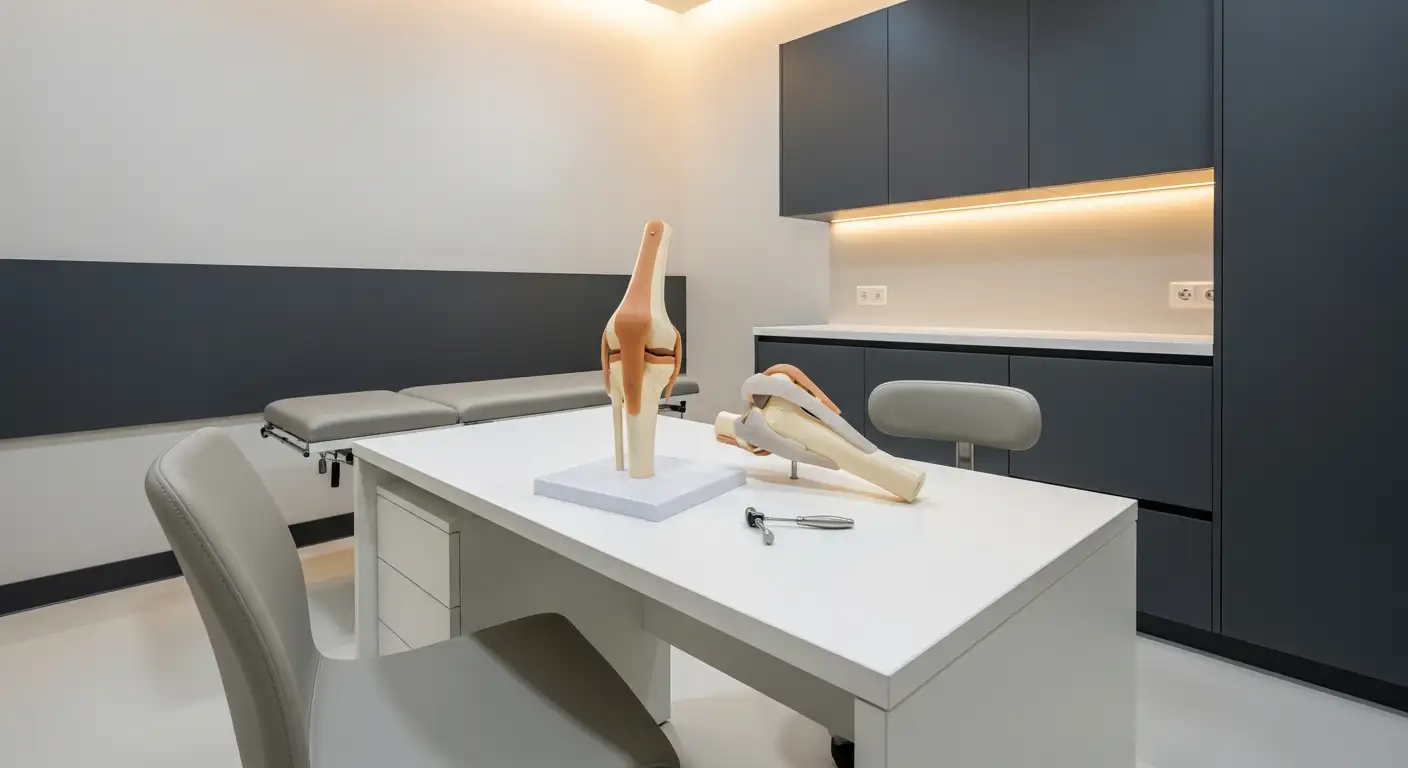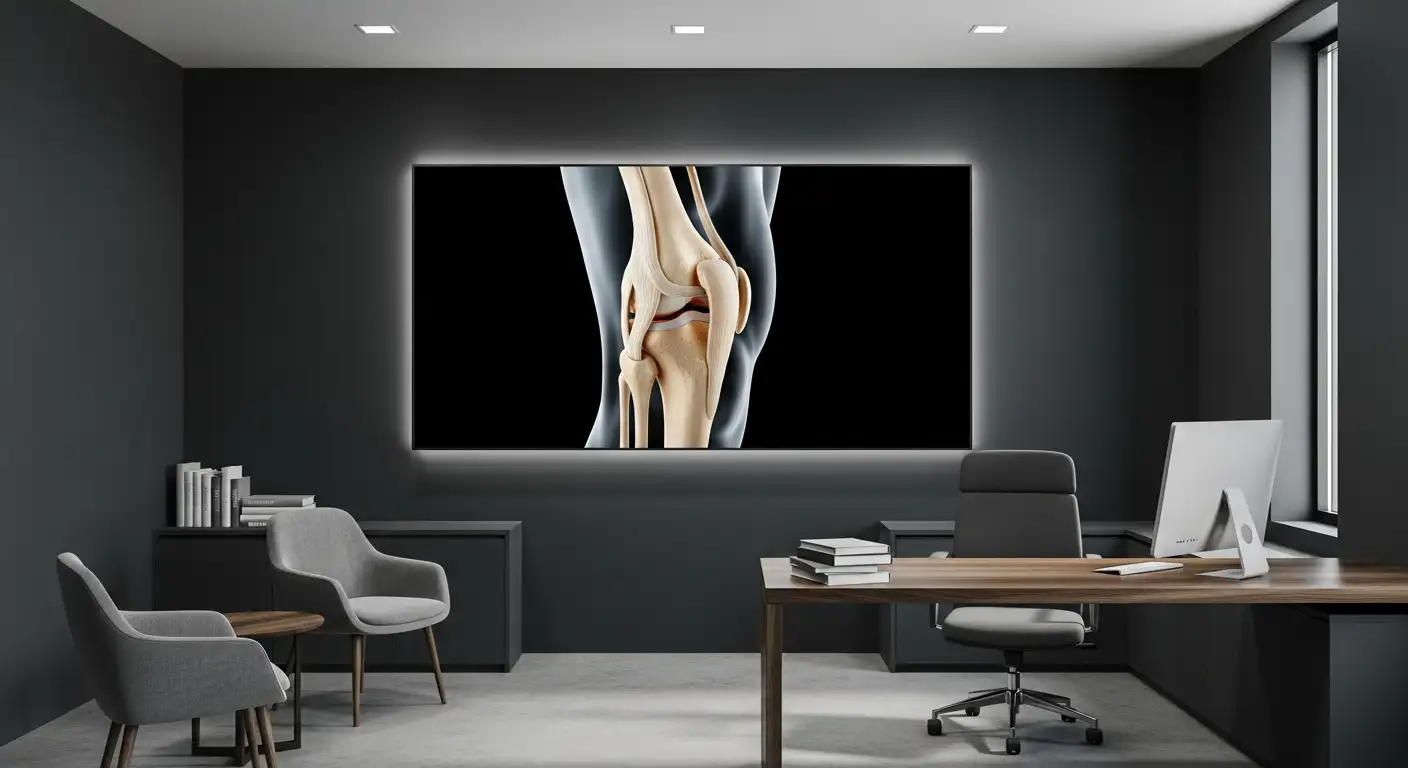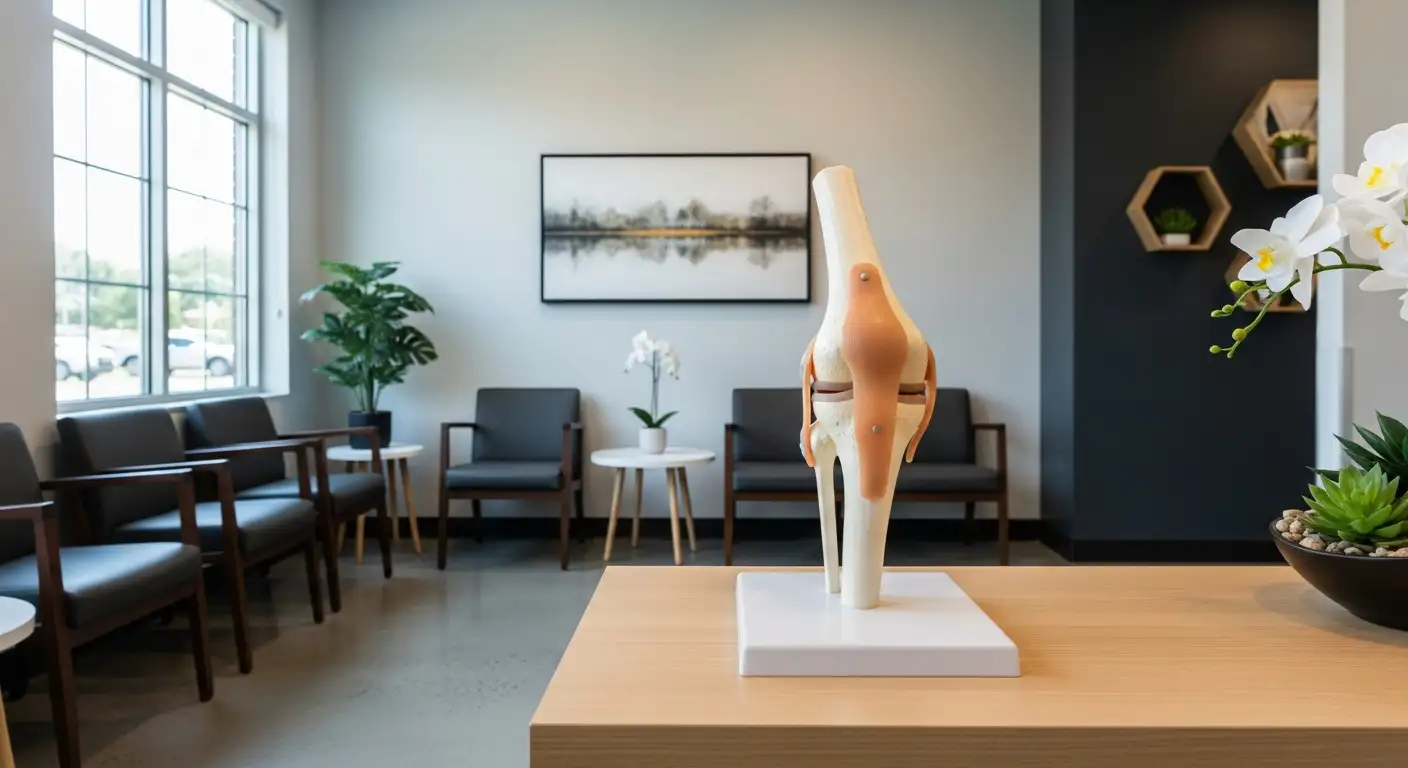Understanding Popliteus Muscle
Anatomy and Function
The popliteus muscle is a crucial component of knee mechanics, playing a significant role in stabilizing the knee joint. It aids both in the closed chain and open-chain phases of the gait cycle. During these phases, the muscle contributes to the external rotation of the femur on the tibia and the internal rotation of the tibia on the femur, respectively. This unique function allows the popliteus to facilitate movement and stability in the knee joint.

In a non-weight-bearing state, the popliteus acts as the primary internal rotator of the tibia. It helps in the "locking" and "unlocking" mechanisms of the knee. Specifically, it medially rotates the femur on the tibia to achieve extension, while it causes flexion and lateral rotation of the femur on the tibia for unlocking. Its involvement in these processes highlights the muscle's multi-functional role in the gait cycle, including aiding in external rotation during propulsion and preventing forward glide of the femur on the tibia [1].
Role in Knee Stabilization
The popliteus muscle serves as a stabilizer for the knee joint. It helps maintain proper alignment and motion, especially during dynamic movements. By resisting excessive rotation and translating forces, the popliteus ensures that the knee functions effectively during activities like walking, running, and jumping.
In addition to its stabilizing role, the popliteus helps to unlock the knee when it is in an extended position. By laterally rotating the femur on the tibia while the foot is planted on the ground, the muscle allows for smooth transitions between flexion and extension [1]. This action is vital in preventing mechanical issues and injuries that can arise from improper knee function.
Understanding the importance of popliteus action is essential for addressing knee pain and achieving optimal joint health. For those experiencing symptoms like a need to pop the knee without success, further exploration of the popliteus and its functions may provide insight into their knee concerns. For more information, refer to our article on my knee feels like it needs to pop but wont.
Common Injuries and Symptoms
Causes of Popliteus Injuries
Popliteus injuries can result from several factors. Common causes include:
Popliteus muscle injuries are frequently associated with posterolateral corner injuries of the knee, which may happen due to a varus force or direct blows to the knee [2]. Sports like running downhill can also contribute to injuries such as tenosynovitis or strains.
Symptoms of Popliteus Muscle Issues
Individuals with a popliteus muscle injury might experience various symptoms, including:
SymptomDescriptionPainGeneral pain localized to the back and lateral side of the knee.SwellingNoticeable swelling in the knee area indicating injury.StiffnessDifficulty in moving the knee joint.WeaknessDecreased strength and stability in knee movement.TendernessPain on resisted knee flexion or internal rotation [1].Edema or BleedingPossible edema in the knee and bleeding in some cases [3].
Individuals experiencing these symptoms, especially after a notable injury or consistent knee pain, should seek medical evaluation and consider the my knee feels like it needs to pop but wont phenomenon, which may indicate underlying issues.
Diagnosis and Treatment
When it comes to addressing injuries related to the popliteus muscle, a structured approach is necessary for accurate diagnosis and effective treatment.
Diagnostic Procedures for Popliteus Injuries
Diagnosing popliteus injuries typically requires a blend of physical examinations and advanced imaging techniques. The most common method for diagnosis is through magnetic resonance imaging (MRI). This imaging technique allows healthcare professionals to visualize soft tissue structures around the knee, including the popliteus muscle, which can help determine any potential damage or associated injuries [2].
Steps in Diagnosis:
Common Popliteus Injury Symptoms:
SymptomsDescriptionPainOften localized around the back of the knee and may increase with movement.SwellingObservable swelling may occur due to inflammation.InstabilityFeeling of the knee giving way during activities.
Effective Treatment Methods
Once diagnosed, treatment for popliteus-related injuries may involve both conservative and surgical methods depending on the severity of the injury.
Conservative Treatment Options:
Surgical Treatment Options:
For cases where conservative methods do not lead to improvement, surgical intervention may be considered, especially in cases of persistent pain following procedures like total knee replacement. Surgical options may include:
Providing ample time for recovery and gradual reintroduction to normal activities is crucial for long-term health following treatment, ensuring that the popliteus muscle can function properly again. Seeking guidance from a healthcare professional can help in understanding the best course of action based on individual circumstances. For additional insights about managing knee pain, consider exploring our article on my knee feels like it needs to pop but won't.
Rehabilitation and Recovery
Rehabilitating the popliteus muscle is essential for restoring function and reducing pain in individuals dealing with injuries. This rehabilitation typically involves a combination of manual therapy and home exercises.
Manual Therapy for Popliteus Injuries
Manual therapy plays a crucial role in the recovery process for popliteus injuries. It is recommended to have therapy sessions at a frequency of 2 sessions per week for the initial two to three weeks. As symptoms begin to alleviate, the frequency of sessions can be reduced to once per week [1].
One effective technique used in manual therapy is the Popliteal Squat Release. This Motion Specific Release™ technique is specifically designed to help manage popliteus-related knee injuries and improve function.
Session FrequencyDurationInitial Phase2 sessions/week for 2-3 weeksFollow-Up Phase1 session/week as symptoms improve
Home Exercises for Rehabilitation
In addition to manual therapy, a consistent home exercise routine is vital for recovering from popliteus injuries. These exercises typically include mobility work, strengthening routines, and balance training to promote overall knee function. A recommended progression of exercises is as follows:
Daily home exercises not only facilitate recovery but also play a part in long-term knee health. Regular follow-up assessments should be conducted to monitor progress and make necessary adjustments to the rehabilitation plan.
For individuals dealing with specific knee issues, exploring comprehensive programs may prove beneficial, including those focused on the best exercise for hamstrings or using supportive gear such as an ace knee sleeve or a hyperextension knee brace.
Preventing Popliteus Tendinopathy
Causes and Risk Factors
Popliteus tendinopathy is primarily linked to overuse of the muscle-tendon unit. Athletes, especially those who engage in running or training on hills or banked surfaces, are at higher risk. Specific causes can include a direct varus force applied to the knee or a sudden forced knee hyperextension. Additionally, individuals who hyperpronate their feet may also face increased risks of this condition [4].
Risk FactorDescriptionOveruseHigh-volume training or sudden increases in activity can strain the popliteus muscle.Poor Foot MechanicsHyperpronation can alter knee mechanics and lead to tendinopathy.Direct ForceImpact or trauma to the knee can cause injury to the popliteus tendon.Sudden MovementsQuick changes in direction or hyperextension can trigger symptoms.
Strategies for Prevention
Preventing popliteus tendinopathy involves proactive measures to reduce the risk of injury. Here are some effective strategies:
By implementing these strategies, individuals can better protect their knees and mitigate the risk of developing popliteus tendinopathy. Additionally, individuals experiencing symptoms such as pain and swelling should seek guidance from healthcare professionals. For more details on symptoms and diagnosis, refer to our section on my knee feels like it needs to pop but wont.
Popliteus Tendinopathy Management
Symptoms and Diagnosis
Popliteus tendinopathy is characterized by several symptoms that primarily affect the knee joint. Individuals suffering from this condition may experience:
It is relatively uncommon for those without a history of knee trauma to experience this condition [4].
Diagnosis of popliteus tendinopathy generally relies on a thorough case history and physical examination. Key indicators include tenderness along the proximal popliteus tendon and pain during resisted external rotation. It's vital to differentiate this condition from intra-articular issues, such as posterior horn tears of the meniscus [4].
Treatment Options
Effective management of popliteus tendinopathy often includes a combination of treatment methods aimed at alleviating pain and promoting recovery. Treatment options may encompass:
Treatment MethodDescriptionRestReducing activities that exacerbate the painIceApplying ice packs to reduce inflammationElevationRaising the affected knee to decrease swellingPhysical TherapyTargeted exercises, including eccentric strengthening to minimize strain on the popliteusNSAIDsNon-steroidal anti-inflammatory drugs to manage pain and inflammationCorticosteroidsInjections for significant inflammation when necessaryTapingKinesiology taping to support the kneeCompression BandageTo reduce swellingKnee SleeveProviding additional support and stabilitySurgeryConsidered in severe cases of tendinopathy that don't respond to conservative treatment options (Physio-pedia)
Incorporating these treatment strategies can significantly help in the management of popliteus tendinopathy, promoting healing and enabling individuals to return to their desired activities effectively. For further information about knee support, consider looking into products like the ACE knee sleeve or the DonJoy ACL brace for additional support during recovery.
References
[2]:
[3]:
[4]:





